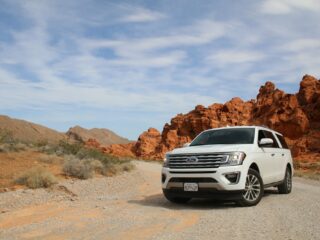
However, when I did the trek for the first time, I immediately regretted not checking a few points prior to arriving in Kathmandu. To help you avoid similar disappointment, have a look at the below information.
How much will it cost?
While it is possible to enjoy this life experience without selling a kidney, an epic adventure such as trekking to Everest Base Camp (EBC) will carry a sizeable price tag. The cost can be adjusted to your means, but budget for between $3,000 and $6,000.
Note that there are additional risks to trekking in this region as most emergency situations are tended to via helicopter ambulance (see altitude sickness below), which will mean extraordinary costs. To avoid this book travel insurance that definitely covers EBC.
Is EBC difficult?
While just the name ‘Everest’ might invoke reactions of awe and wonder, a trek to EBC is actually quite attainable. You don’t even need any mountaineering experience. The trek involves no technical climbing at all.
However, that does not mean it should be taken lightly. Being prepared, both mentally and physically, and knowing what to expect is the key to a successful and safe trek.
How to minimize the effects of high altitude on my body?
With EBC situated at 17,600 ft (5,380m), you should expect to be affected by altitude sickness. To ensure your body can function at these higher altitudes, you need to acclimatize.
Acclimatization is the process of allowing your body to slowly adapt to the decreased oxygen in the air. Failing to do so will ultimately result in fluid build up in your brain and lungs, and it is fatal if not corrected promptly. Symptoms that start to appear include tiredness, headache, weakness and a lack of appetite.
If Acute Mountain Sickness (AMS) is suspected, the most immediate and effective course of action is to descend at least 1,000 ft (305m). Always let your trekking guide know that you’re not feeling well and advise them of your symptoms. Feeling unwell on a trek to EBC is not the time to appear tough and just push through.
Every person has what is known as an ‘Acclimatization Line’. This is each person’s unique tolerance level to altitude. As a new climber you may not know where your line is, but you’ll quickly learn at what point your body starts to exhibit symptoms of altitude sickness.
Your line will slowly increase as you allow your body to acclimatize, and as long as you stay below your line while ascending, your body will be able to handle the change.
If you develop a cough but show no other symptoms besides a runny nose or some phlegm when you cough, you may have a bout of what is known as ‘Khumbu Cough’. This is brought on by a combination of icy temperatures, high altitude, low humidity and physical exertion.
How to train and prepare for EBC?
Although it’s a hiking destination, you do still need to train for EBC.
Take an honest look at your current fitness level. It takes 5-7 hours of trekking about 9.5 miles (15 km) a day to reach EBC. If you are still reading and haven’t freaked out, great! That’s the first step. Mental determination.
To get your body ready for the task at hand, do some practice hikes in your area. If you are a novice, start slowly. You don’t want to risk an injury.
For the more seasoned hikers, start increasing your distance. Ultimately, you want to be able to comfortably do a few 5-6 hour-long day hikes.
Toughen up those legs that will carry you and your daypack up to base camp. Strong core muscles and good flexibility will assist in preventing injuries.
Test and wear in your gear, not just your hiking boots. Make sure you know how everything works, and ensure the gear is rated for the conditions you will experience on the hike.
How to not overspend on trekking gear?
While the excitement of your imminent adventure might cause you to go out and buy absolutely everything, rein it in. Bear in mind that you will be carrying some of it, so ask yourself – “Do I really need this?” before purchasing too much stuff.
You will be spending most of the day on your feet, so your hiking boots top the list. Make sure your boots fit well. Consider the socks you wear with the boots, keeping them all of the same thickness will also ensure a consistent fit with no chafing. Blisters are NOT your friends.
Are you buying brand new shoes and saving them for the special occasion? That’s a huge rookie error! Wear those shoes in on your practice hikes!
When it comes to clothing, lightweight and insulating is what you’re looking for. Layer up.
If you want some help with your packing list, click through and have a read.
What is the best time to trek in Nepal?
Nepal has its warm dry seasons between September and November, and again from March to early June. This is the best time to go.
Avoid monsoon season that kicks off mid June. Late December and early in the year may be dry, but it can get very cold. If you are keen on freezing temperatures and maybe even some snow flurries, then this time of the year could be an option for your trek.
What EBC route would suit me best?
The most common route goes through the Khumba Valley, then the Sagarmatha National Park onward to EBC. This takes about 12 days.
Other route variations to consider:
Gokyo Lakes Trek – Taking in the scenic Gokyo Lakes adds 2-3 das to the trek but you get to avoid the crowds.
Chhukhung Valley – Add an overnight stay in Chhukhung and extend the length of the traditional route.
Island Peak is an option for those that like a bit more of a climbing challenge. Ice axes and crampons will be required for this one. This is a training peak for those attempting to summit Everest, so it’s a big commitment indeed!
If time is not a big factor, and you want a less frenetic route, opt for one of the alternatives. If you just want the tried and tested version so that you can put a great big tick on your bucket list, then opt for the popular route – it is very popular for a reason after all.






